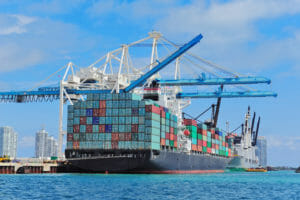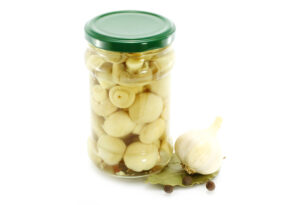As the war in Ukraine enters its sixth month, the U.S. and its allies continue to look for opportunities to undermine Russia’s ambitions using economic means. While this dynamic has played out primarily in the export realm, import policy is also proving to be a pressure point.
A prime example of this involves the Biden administration’s recent action with respect to the amount of Column 2 duty assessed on Russian origin merchandise. Building on the authority laid out in the Suspending Normal Trade Relations with Russia and Belarus Act of April 2022 and the import prohibitions established in March 2022 by E.O. 14066 and E.O. 14068 (covering crude oil, petroleum, LNG, coal, seafood, certain alcoholic beverages, diamonds, etc.), President Biden announced, pursuant to Presidential Proclamation 10420, that 567 distinct articles of Russian origin would, effective 27 July 2022, be subject to a 35% ad valorem rate of duty. This action has the effect of ensuring a substantial duty burden applies to those products which, as currently provided for under Column 2 of the Harmonized Tariff Schedule of the United States (HTSUS), have either a free or minimal rate of duty. As a result of this action, the lion’s share of strategically significant Russian origin merchandise is either prohibited outright or subject to ad valorem duties of 35% or more. The same Proclamation, it should also be noted, amends General Note 3(b) of the HTSUS to add Russia and Belarus to the list of countries already subject to Column 2 duties (i.e., Cuba and N. Korea).
Underscoring the depth of the Biden administration’s resolve in this regard, CBP has already issued guidance to the trade on the implementation of these measures. Consistent with the terms of the Proclamation, importers will, for merchandise coming within its scope, be required to enter HTSUS heading 9903.90.08, as informed by U.S. note 30(b), alongside the Chapter 1-97 HTS on the appropriate Entry Summary line. Products provided for in this heading shall, in addition to the newly defined ad valorem rate of duty, continue to be subject to antidumping, countervailing, and any other applicable duties, fees, exactions, and charges. The modifications set forth in the Proclamation continue in effect until expressly reduced, revised, or terminated.
The immediate impact of this measure will, for the same reason discussed in our earlier blog post on this subject, be limited. There can be no other outcome where Russian origin goods amount to approximately 1% of all U.S. imports (with a total estimated value of $29.7 billion in 2021). That said, some action is better than none when it comes to countering the aggression of the Russian forces. And, to the extent the U.S. example of imposing ad valorem duties on strategically sensitive goods – coming, as it does, on top of earlier action to suspend the NTR (MFN) status of both Russia and Belarus – serves as a catalyst for like-minded allies to take similar measures, this initiative could end up having a ripple effect. Of course, any upside realized in connection with this last point would be significantly compounded by a decision on the part of India and/or China to not only forego the future purchase of Russian origin goods but also join the G7 nations in restricting Russia’s MFN trade status. Unfortunately, however, the prospects for either of these possible developments are, respectively, minimal and zero. At least for now.
Going forward, U.S. importers should exercise due diligence for the purpose of ascertaining the admissibility and duty rate of Russian origin goods in advance of purchasing and entering same. Or, if feasible, avoiding such import transactions altogether. Importers who fail to conduct this kind of due diligence should, alternatively, anticipate the possibility of disrupted supply chains, additional duties, and unwanted CBP scrutiny.

























